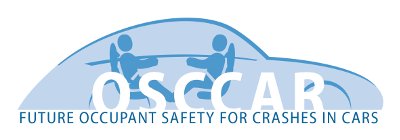Objectives
Future vehicle developments create a need to assess relevant accident scenarios not addressed by today’s regulations or consumer crash tests. As future HAVs are expected to provide new, alternative sitting positions, i.e. increased travel comfort for the occupant, these sitting positions will be in need of safety approval and homologation. OSCCAR will analyse occupant vehicle safety requirements for HAVs and define the technological developments needed to enable the automotive industry to design and develop new safety systems for advanced, safe and comfortable sitting positions. Dedicated, advanced protection principles and concepts will be developed and assessed by using harmonized, enhanced HBMs suitable for complex test cases, where conventional physical crash test dummies, technically known as anthropomorphic test devices (ATDs), cannot reliably be used. Additionally, the virtual, enhanced HBM approach for assessment allows for the consideration of heterogeneity characteristics like gender, age and other demographic factors at feasible cost, for a dedicated and individual increase in safety for the occupant population.
OSCCAR will deliver an integrated approach to enhance the personal safety for all occupants involved in future vehicle accidents. Specific scientific and technical objectives, main innovations and targeted key results of OSCCAR are:
Understanding future accident scenarios involving passenger cars
Demonstration of new advanced occupant protection principles and concepts
Contribution to the development of diverse, omnidirectional, biofidelic, active and robust HBMs
Establishment of an integrated, virtual assessment framework
Contribution to the standardization of virtual testing procedures
Development of an exploitation strategy towards large scale implementation of virtual testing methods
